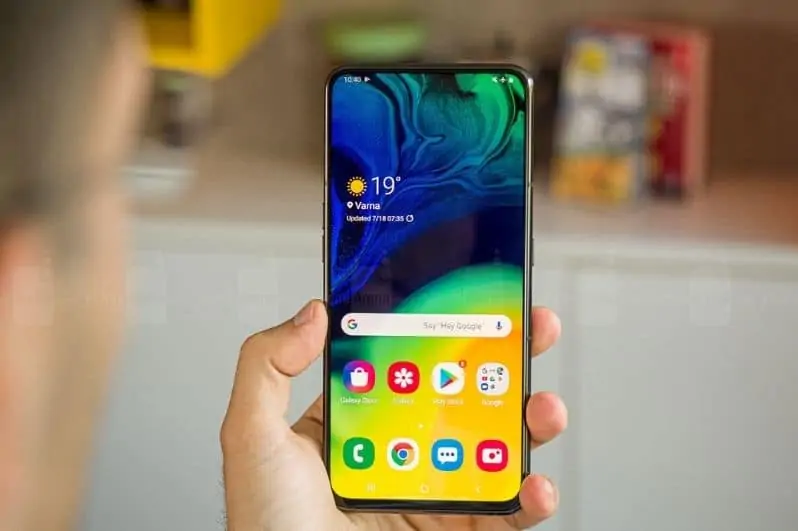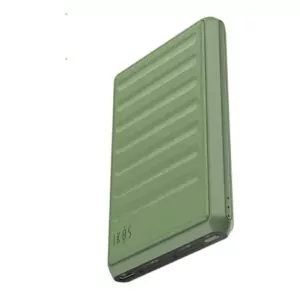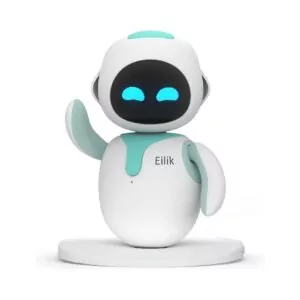Let us work our way up the Samsung Galaxy A array — we begin decidedly cheap together with all the Galaxy A30, enhance some small specs and features for the A40 and A50, ideal the cheap’ mantra of this series together with the A70. then throw the rules out the window using the Galaxy A80, which appears on the surface such as a revolutionary departure from the remainder of the Galaxy A string.
Using its own pop-up rotating back camera segment, you are not getting a regular cheap’ handset at the Galaxy A80. It presents a more curious mix of attributes that straddles the line between cheap and superior — it is a unique, novel device that is guaranteed to catch attention at parties.
Drawing a crowd is 1 thing, but you are likely to use your cellphone all the time, and also the Samsung Galaxy A80 also presents a collection of compromises so as to match its comparatively mid-range cost tag.
So does the consequence of those compromises depart the Galaxy A80 a glorified gimmick telephone that is not worth your cash? Or can it be a genuinely impressive apparatus?
Despite being a part of Samsung’s Galaxy A range, that’s that the organization’s roster of cheaper smartphones, the Galaxy A80’s cost puts it in the top limit of their mid-century sector.
The Samsung Galaxy A80 Price in UAE is AED1500-AED1800, which makes it somewhat less costly than the Huawei P30 launch cost of AED2567 although less cheap than the Google Pixel 3a at AED1465.
At the present time, you’re able to grab the telephone in the united kingdom, but there is no word on the US or Australian launch — we will update this review once we find more.
Design
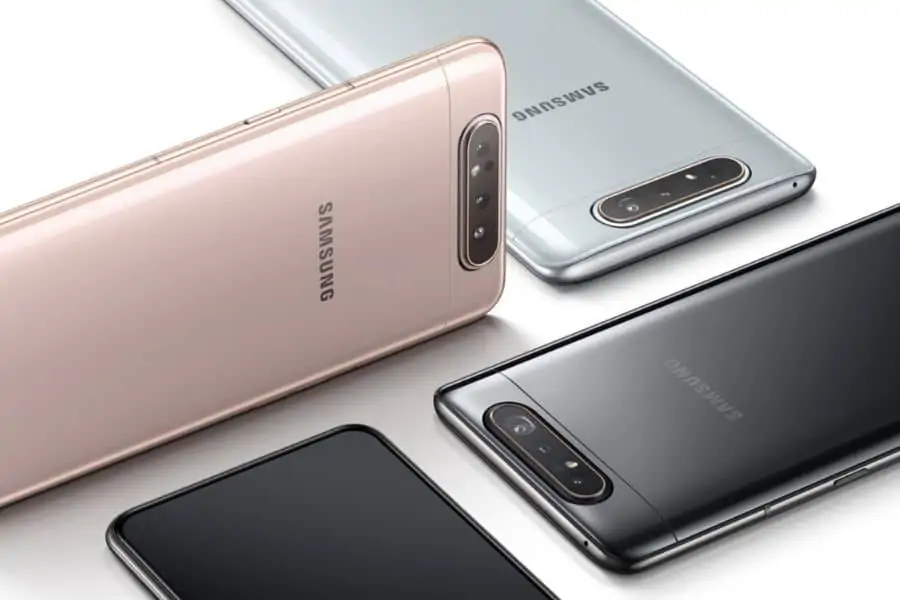
The Samsung Galaxy A80 is a semi-permeable apparatus, both concerning weight and size, and it is probably not good for somebody who would like a nimble phone that is easy to hold in 1 hand.
Founded at 220g, the Galaxy A80 is among the heaviest phones we have seen — it is not quite the 232g of this Huawei Mate 20 X, however, it is a whole lot heavier than most other apparatus. In contrast, the Galaxy A50 is a fairly dinky 166g.
The dimensions of the apparatus are 165.2 x 76.5 x 9.3mm, therefore it is not quite as large in comparison to other mobiles as its weight indicates, but it is up there. The telephone is so large to ease the big 6.7-inch display, which we will get to later.
The Galaxy A80 certainly feels like a luxury apparatus — its own Gorilla Glass screen and rear, and metallic framework make it equally as superior to maintain as the priciest iPhone or Galaxy S10.
Around the sides of the handset, you will discover a power button on the right, and also the volume rocker on the left side. Possessing these buttons on either side of a telephone is something makers maintain persevering with, though it makes it a nuisance having to achieve both, and we are disappointed to see it.
There is a USB-C interface on the back of the apparatus, together with the only down-firing speaker. There is no 3.5millimeter headphone jack, which is no surprise given the tendency of businesses insisting you purchase wireless headphones, but having just 1 speaker is a hassle which we will get into later.
Now on what you would like to hear about — the pop up rotating camera segment. It is a fun novelty, for certain, but it seems like less of a helpful way to solve the notch problem compared to other pop-ups like on the OnePlus 7 Guru or Oppo Reno 10x Zoom.
First, the pop up is quite slow, largely because of how high it must rise to receive the camera to rotate, so it does not feel snappy or easy to utilize.
Second, the panel is a dust magnet, and each time we popped up it we needed to wipe away the dust.
Thirdly, and more importantly, the part seems quite brittle. When it is down, it is possible to shake it and wiggle it much work so that it rattles around in its own casing, and as soon as it’s up, it’s possible to easily reverse and fiddle with all the rotating board, causing the phone to freak out and shut the camera program.
We discovered it’d easily get stuck halfway up when we twisted this particular panel and frequently wanted our help to come back to normal.
When the pop-up camera is it down shook and rattled like it had been loose, which can be far from a fantastic indication on a smartphone that should last us all years.
The clear reply to this does not fiddle with the segment’ however to imply that as legitimate guidance will be to deny people’s natural impulse to fiddle with matters — particularly to the younger audience the Galaxy A80 is targeted at.
Within the course of our inspection, we began to feel quite nervous with the pop-up segment due to its frailty — we all know what happened to the Samsung Galaxy Fold, also did not wish to recreate it by dividing the moving regions of the A80 too.
Screen
When there’s something that you can depend on Samsung mobiles for, it is their high-quality displays, and this Samsung Galaxy A80’s screen is fantastic to check out.
With Super AMOLED screen technician, which ends in a high contrast ratio and vivid colors, the Galaxy A80 guarantees a fantastic viewing experience, along with the fairly substantial maximum brightness is nothing to turn up your nose.
There’s a variety of attributes in the preferences menu which allow you to adapt the display quality to your specific preferences also, like including a blue light filter or dim style or tweaking the RGB colors of the display.
We made certain to flip on Vivid style in the preferences menu as its name implies that makes colors more vibrant, but perhaps somewhat less natural, but it still makes matches and press more attractive.
In addition to this (literally), the deficiency of top-notch causes this Samsung’s best screen up to now, since there are not any complications becoming the manner of your viewing experience, without an elite or bezel taking up your precious screen real estate.
If there’s something which could possibly be a small unappealing about its screen, it is the size — in 6.7 inches, then you may get the screen, along with also the telephone, a bit too large to use readily in the event you have bigger hands.
There is a one-handed mode it is possible to empower, but it gets the viewable screen comically little, so is not as easy as it is indifferent devices.
You are getting a 3,700mAh battery at the Samsung Galaxy A80 — which may seem like a reasonable amount, but in practice, it had been only enough.
During average phone usage, the battery will see us throughout the afternoon, but only just. Heavy usage found us needing to power up the telephone in the day and either way we needed to be certain that you control the handset immediately if we wanted to use it the following moment.
This hefty battery drain makes sense since the aerodynamic pop-up and large, glowing AMOLED screen probably both draw quite a lot of power. But to get a telephone that is aiming for a younger target market, who might not think to set their mobile on charge nightly, longer battery life could be appreciated.
The TechRadar battery evaluation contains enjoying a 90-minute video whereas the screen is on maximum brightness, together with Wi-Fi and accounts syncing at the backdrop, and seeing just how far the battery percent drops out of 100 percent. The Galaxy A80 fell 12%.
N contrast, the Google Pixel 3a fell 16%, although the Huawei P30 just lost 7 percent. The Galaxy A80, subsequently, obtained a reasonable score, as may be anticipated with Samsung apparatus, which may be depended on to perform content without killing the battery.
If that is great, powering the unit is excellent thanks to Samsung’s 25W quick charge. After plugging the phone for just a brief quantity of time the battery percentage springs upward, and it just took 40 minutes to bill out of 0% to 50% battery. That is rather snappy, or so the phone will be ideal for men and women that do not find time to plug in every day.
Camera
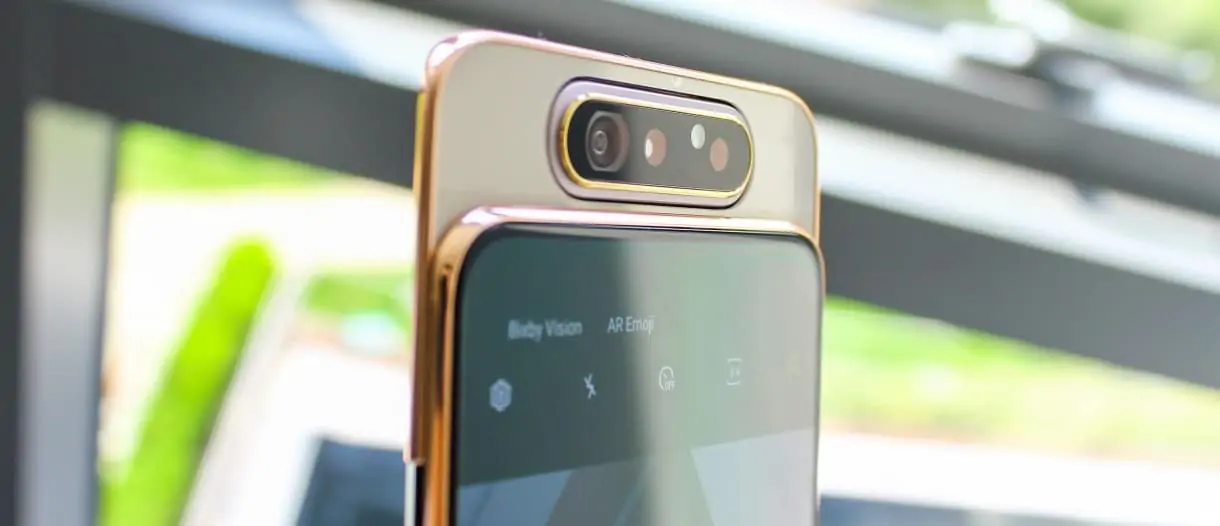
The Samsung Galaxy A80’s most important camera is 48MP f/2.0, and it is joined by an 8MP f/2.2 snapper having an ultra-wide lens along with a 3D Time-of-Flight (ToF) f/1.2 camera that is used to feel thickness, for greater portraits.
Let us begin with the next camera, the ToF lens, which can be utilized to judge thickness and insert bokeh background blur in Live Focus mode. To put it differently, it is really powerful — portraits are a few of the best we have seen out of a smartphone concerning proper levels of bokeh, and the wallpapers are not blurred so much that they seem artificial.
On the other hand, the ToF camera features the customary telephoto snapper we capture on many smartphones, therefore zooming is not as much an alternative for photos. There is no optical zoom, only digital, therefore pictures get grainy quickly once you attempt to zoom.
Camera two might be the ultra-wide lens snapper, and we were impressed with photos taken with itas for the most part they do not possess the twisted edges of a number of other ultra-wide smartphone images while keeping a high degree of quality.
The primary camera is much more of a mixed bag. On the great side, color capture is excellent — blue sky, green t-shirts, navy candles all seem vibrant without appearing artificial, even if spectacle optimization is turned away.
On the negative, night sight leads to images that may well just be ordinary photographs taken in darkness, but with the brightness turned out. Details were not clear, and many shapes can not even be produced out.
Then into the nasty side — spectacle optimization. It all seemed to do was create colours brighter, with no of the subtlety or nuance you would find on something similar to a Huawei apparatus, and in addition to it required quite a while to recognize a spectacle.
Generally, photographs were OK, but a mixed bag of processing approaches supposed they were just that — OK — rather than fantastic at all.
This is typically the stage where we discuss the front-facing camera, however at the Galaxy A80 that the front’ and rear’ cameras are the same, so photos taken are indistinguishable — although there are not as many purposes.
After you pop up the panel to have a front-facing image, the camera program has fewer choices than when you are shooting a rear-facing photo. For one, panoramic and night photography styles vanish so that you can not take a noninvasive selfie, you can not zoom either, and there is no spectacle optimization choice.
We can not think of a reason why you would not have the ability to use those modes, as you can if the specific same cameras have been pointed out another way, but they are merely one of the few ways that the camera program presents you different choices depending on how it is flipped.
A few of the choices are somewhat more useful, such as an ultra-wide-angle selfie-style which allows you to pick from an assortment of fields of view based on the number of men and women are in the image, providing you greater customization compared to portrait styles frequently do.
It is quite novel to get a smartphone’s secondary and tertiary cameras to be much more practical than the most important one, although the ultra-wide and ToF lenses gave themselves into great scenic and portrait images, we weren’t as impressed by photographs shot with the major camera.
Interface and reliability
The Samsung Galaxy A80 includes Android 9, the latest Android working platform, with Samsung’s One UI laid on the top.
Much like many customized user interfaces, the largest change on the market Android is your aesthetics, as One UI goes to get a muted or light color scheme, curved square icons, along with a larger emphasis on widgets compared to other UIs. We discovered it seems somewhat babyish, but it is definitely much less garish or lurid than some different UIs (we are looking at you, Huawei P30).
In addition to this, Samsung’s focus on customization, when it comes to widgets, icon size, and navigation alternatives, feels like a return to that which initially made Android more attractive than iOS, and it lets create the apparatus feel genuinely ours’.
We have a great deal of time to appreciate the overall look of the program, as we spent staring at it since we waited for a variety of items to get the job done. This is due to the fact that the A80 feels quite slow to utilize. You are likely to blame the chipset for this, as we will get into later.
Opening and closing programs took somewhat longer than other phones, particularly the camera program, which the apparatus seemed reluctant to start. Turning the handset also took much more than we would like it to.
This was not helped by the unreliable fingerprint reader, which more often than not did not recognize our thumb once we attempted to turn on the device, and we would frequently have to attempt and start the phone multiple times until we finally got in.
We constantly did get in, in the long run, so we never needed to resort to only using our PIN such as from the Sony Xperia 1, but it nevertheless left logging to the handset a significant pain.
The other difficulty we had with the telephone is that information often would not function if we abandon it over some time. This was easily fixed by switching it off then on again, but it was a slight annoyance as it occurred, as we frequently would not notice and did not capture messages consequently.
1 final annoyance? Even the emoji keyboard is a lot more difficult to get from the Galaxy A80 than it’s in essentially any telephone, as you must dive right into another menu from the computer keyboard. To get a handset targeted towards younger audiences, that will not make much sense in any way.
Music, films, and gaming
One of the primary attractions in using a screen with no top-notch is that the display is excellent for seeing content and enjoying matches, so it is fitting so that gambling on the Samsung Galaxy A80 is astonishingly quick.
As we have stated the Galaxy A80 felt somewhat slow to work with, but once we filled up a match this slow performance disappeared — on PUBG Mobile the match defaulted into the greatest graphics settings, ARK: Survival Evolved ran with no typical laggy gameplay, and a lot more of those demanding games we all played may have been operating on a premium mobile phone.
This tells us that the handset is optimized for gaming, and it is one of the very few methods by which the telephone feels all premium.
The Galaxy A80 can also be perfect for seeing pictures and TV shows owing to its high-quality screen, but we had the standard problem that crops up whenever the volume rocker and power button are on opposite surfaces of the apparatus — when you are leaning your handset onto a surface, possibly you are inadvertently turning off the screen, or changing the quantity, which can be hugely irritating.
There is also the issue of the handset using one down-firing loudspeaker, which may easily be covered up in the event that you hold the telephone in the incorrect way.
In reality, loudly speaker could be the wrong word for the A80’s speakers since the maximum volume is amazingly low when playing audio out loud.
When we switched on the volume to its maximum and set the telephone in the middle of the living space, we did not need to walk too much for the particulars of the tune to be inaudible. Music quality is not good, but that is to be expected for such a mild speaker loadout.
The most important difficulty with all the Galaxy A80 for a music device, however, is that the erectile dysfunction lock display widget, making it excruciating to use for enjoying audio on the move.
Within the course of a 1-hour walk, through which we place the A80 in our pocket and listened to music downloaded in Spotify with Sony WH-1000XM3 cans, we had the following issues: the quantity increased to maximum levels with no input, the audio could melt for no reason when we attempted to skip one song multiple could bypass, at times the widget switches would not enroll our signature so we could not skip songs (or return to tunes that were skipped), then at the conclusion of our journey once we desired to pause the song to stop the music playing entirely, the audio could pause for a nanosecond before beginning again, however many times we told it to stop — it had been, all in all, a hugely frustrating encounter.
The majority of these problems were duplicated in different settings, and it frees us from utilizing the Galaxy A80 as a mobile music player.
Performance and benchmarks
The Samsung Galaxy A80 runs on a Snapdragon 730 chipset, which will be just one of Qualcomm’s latest chips geared towards the mid-century sector.
It is not going to blow your socks off with its processing capacity, but you can do a whole lot worse regarding internals — at least, in theory.
In practice, the Galaxy A80 feels lethargic to use, and it might well be due to this mid-century chipset. When we set the handset via a benchmark evaluation, it returned a multi-core rating of 6,903 — that is middling.
In contrast, the Samsung Galaxy S8, which is just two years old than the A80, scored 6,630, which will be among the closest scores. But in case you’re searching for something published around precisely the exact same period as the A80, that costs approximately the same, you are likely to think about that the Huawei P30, which trumps the A80 with a score of 9,730.
So you are not getting good processing power to the cost — and it shows. As we have previously mentioned, the telephone simply feels slow, particularly while using the camera program, and it is possible to locate a snappier smartphone encounter in lots of the A80’s competitions.
Verdict
There is nobody major problem with the Samsung Galaxy A80, and we actually wanted to appreciate it because of its special pop-up camera segment, but it is difficult to remain confident in the face of a wave of minor troubles.
Between the fingerprint sensor, audio playback issues, data diminishing, slow performance, delicate camera segment, and feeble loudspeakers, the Galaxy A80 is usually just bothersome to use.
The gorgeous display, superior design, and fantastic gaming performance are not sufficient to compensate for the burden of minor problems that you are likely to face when using the Galaxy A80.
That is not to mention the smartphone has been broken, per se, and in several ways, it functions as well as another apparatus. However there are many handsets that don’t have this many bothersome issues, so there is not quite as much reason to decide on the A80.
It would be easy to miss these issues when the Galaxy A80 was inexpensive, but in its current price tag, you are likely to be paying a mid-range price to get a smartphone that does not operate along with many funding apparatus.
Who is it for?
Samsung is pitching the Galaxy A80 for a phone that is good for younger viewers, but with its bulky dimensions and mid-tier camera, it isn’t really helpful for those who have small hands. On the contrary, it’s likely more interesting for those that love a fantastic party trick, also will not get bored with all the pop-up camera novelty.
Should I purchase it?
For the time being, the Samsung Galaxy A80’s cost seems a bit high because of its mid-tier specs, but wait just a little while, and earnings may bring the price down to more moderate levels.

